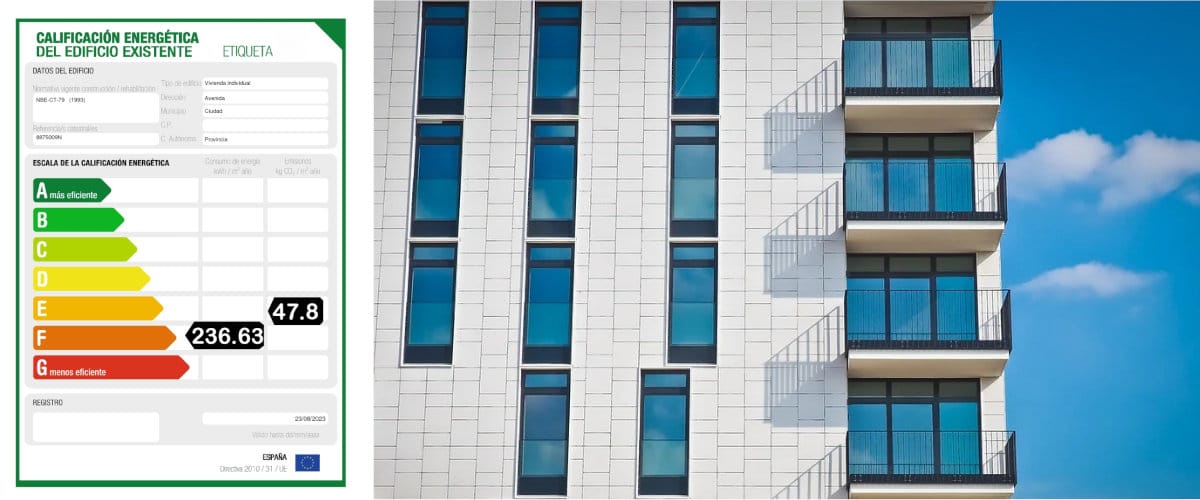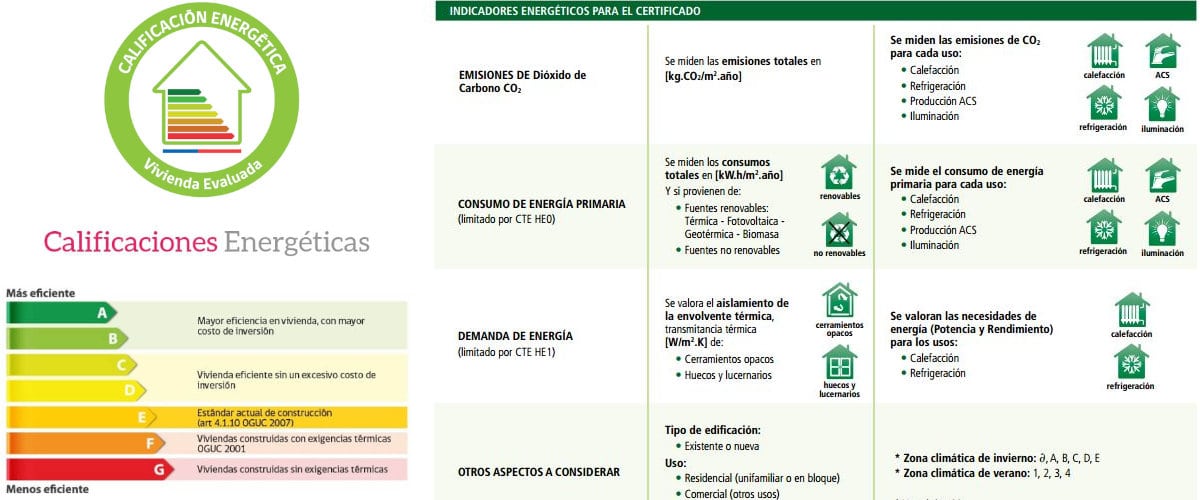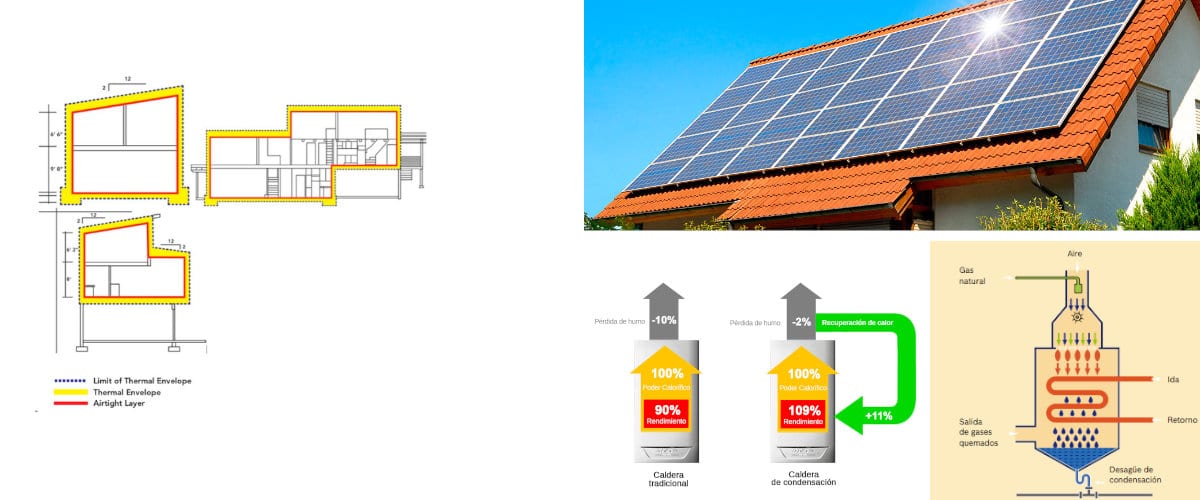
The energy rating of a home shows good or bad energy performance of a building, providing useful information on the aspects to take into account when proposing recommendations to improve said behavior.
Energy is one of the main sources of expenditure in a house, so increasing energy efficiency will be beneficial not only for the environment, but also for our pocketbook. But do we know what factors influence this energy rating? And what changes have a greater influence on improving it?
What do we mean by energy rating?
When we talk about the energy rating of a home, we are talking about an index that, using a scale of letters from A, to indicate the maximum degree of energy efficiency, to the letter G, to indicate the least efficient buildings or homes, indicates us how efficient is a home submitted to an energy certification process.
To determine this level of energy efficiency there are two determining factors. The first the annual CO2 emissions. The second, the annual consumption of non-renewable primary energy to satisfy the energy demand of the building. Both taking into account normal operating and occupancy conditions.
The Technical Building Code (CTE), as a regulatory framework, currently establishes a strict efficiency regulations, security and habitability that a building must meet. Thus, new homes must have an A, B or C rating, something that does not happen with second-hand homes.
Why is it important to improve it?
The improvements in a building related to its envelope or its thermal systems based on the requirements demanded by the Technical Building Code, provide a home with the opportunity to climb one level in your rating. But why is it important? On a higher level ...
- emissions are reduced of greenhouse gases.
- energy efficiency is increased of the house, which will have a direct impact on the energy bill, providing significant savings.
- could increase the value per square meter of the home up to 10%, if it is rated A + and E.
Keys to better energy efficiency
Annual CO2 emissions and annual consumption of non-renewable primary energy They are two determining factors in determining the energy rating of a building. It is easy to deduce, therefore, that an improvement in both the insulation and the air conditioning system of the home will have a great impact on it. However, there are other keys that are also important:
- Orientation of the house. Depending on how the house is oriented, there will be more or less use of the hours of sunshine. It is therefore a factor to take into account when building or choosing a home. A well-oriented house will have an advantage when it comes to energy certification.
- Thermal characteristics of the envelope. Adequate insulation of the building's thermal envelope will allow us to save energy of up to 50% in the case of old buildings. Exterior cladding with insulating products can be applied both in new construction and in refurbished homes to protect and insulate the building.
- Installation of high efficiency air conditioning. The use of condensing boilers, heat pumps and mechanical ventilation systems are excellent alternatives to improve the performance of the facilities.
- "Green" technologies. Resorting to aerothermal, solar panels or biomass will also considerably improve the energy rating. It is also recommended, as the OCU indicates, to change the most used electrical appliances for more efficient appliances.
- Thermal insulation in doors and windows. Good window and door insulation could reduce energy costs by up to 50%. Injecting insulation into chambers and replacing current carpentry with other materials that offer greater protection such as PVC is the easiest way to achieve this.
- Responsible use of air conditioning. Having an efficient HVAC system is important, but so is using it responsibly. It is advisable not to raise the temperature more than 21ºC in winter, nor less than 24ºC in summer.
- Use of LEDs. LED bulbs give off less CO2 emissions than conventional lights. They also have a much lower consumption than fluorescent, incandescent and halogen lamps.


